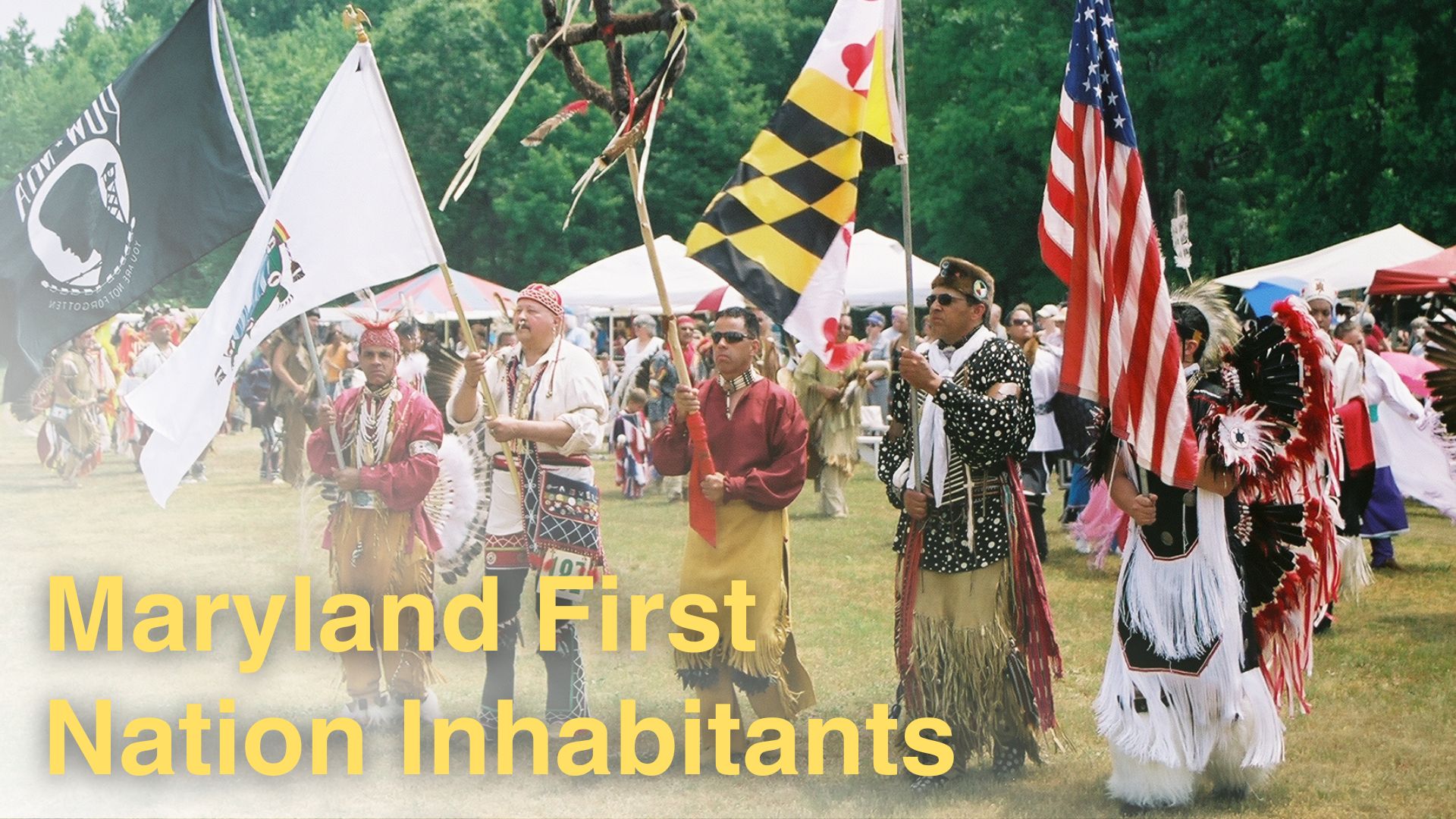In Montgomery County, the earliest native sites are believed to be late Pleistocene Paleoindians, dating back more than 12,000 years. The Native American lands in our area of the Potomac River valley were called Cohongorooto, “land above the falls”. The climate at the time was colder and the area was forested with conifers. The Paleoindians lived in small bands, moving seasonally to hunt bison and mammoths, as well as giant beavers. Using stone tools, they fashioned poles tipped with fluted points – flaked stone. Relics have been recovered near the McKee-Beshers Wildlife Management Area and near Tuscarora Creek.
About 9,000 years ago, as the climate began to warm, plants and animals more like today’s species began to flourish along the Potomac River. Evidence of human habitation dating to the Archaic Period is found along the Potomac, buried many feet in the soil, and on upland areas. Evidence of stone tools from this period, made from Potomac River cobbles has been found along the C&O Canal near White’s Ferry, the Dickerson Conservation Facility, and Point of Rocks.
Life became less seasonal and more sedentary 3500 years ago. Seed collecting began and pottery fragments have been found dating back to this period, indicating the beginning of agriculture.
By 1000 A.D., Native Americans in our area had developed a way of life that included concentrated settlements and villages. In addition to hunting, fishing, and gathering, archaeologists have found evidence of maize and agricultural activity. Evidence of these villages has been found at Point of Rocks, Noland’s Ferry area, Mason and Seldon Islands, and near McKee-Beshers.
The first permanent indigenous settlement to be documented in the State of Maryland was the Walker Prehistoric Village, located in the Potomac River flood plain, north of Seneca Creek. This village was inhabited during the Late Woodland Period, 1200-1500 A.D. It is believed to have been enclosed by a wall or palisade, with the dwellings circling a central plaza. Flood plain agriculture was widely practiced, and the site is unique for the large and variable ceramic samples recovered by researchers. The people inhabiting this village are believed to have been Algonkian speakers.
When the first Europeans arrived in the area, they found inhabitants with a rich culture in well-established settlements. The name Piscataway Conoy is the English translation of Kinwaw Paskestikweya “The people who live on the long river with a bend in it” or what we now call the Potomac. These names were given by local First Nations Families to indicate geographical location – not necessarily the name they called themselves.
The Piscataway Conoy Indians lived on a large island in the Potomac River, Conoy (Heaters) Island. They lived in communal houses which consisted of oval wigwams of poles, covered with mats or bark. The women of the tribe made pottery and baskets, while the men made dug-out canoes and carried the bows and arrows. They grew corn, pumpkins, and tobacco. Their dress consisted of a breech cloth for the men and a short deerskin apron for the women.
The Piscataway were known for their kind, unwarlike disposition and were remembered as being very tall and muscular. They planted corn, squash, tobacco, and beans in the fertile soil. They also constructed the fishing weirs that can still be seen on the Potomac River near White’s Ford. Their settlement was palisaded.
In 1699, visitors counted 150 inhabitants of this village. By 1772, the numbers had dwindled to 50 persons. Eventually, through treaties and westward expansion, the indigenous peoples of our area moved, for a time, north to Pennsylvania or south to the Carolinas. Many Piscataway Conoy tribe members returned to Maryland. They are officially recognized by the state of Maryland as the First Families of this land. Most of their descendants live in Prince George’s County and Southern Maryland. The Cedarville Band of the Piscataway Conoy has a cultural and resource center in Waldorf, MD, once the heart of their historical hunting grounds. They consider themselves Wee-So “The People”. They are the modern descendants of those families who once lived on these tidewaters. They are a Band, Clan, Nation, and a Non-Profit organization who have hosted Maryland’s only Pow-Wow for 38 years, and only Piscataway focused Museum.
As you enjoy a stroll along the C&O canal or walk through the McKee-Beshers Wildlife Area, take a moment to imagine that area as it was 12,000 years ago. Look for traces of the past. Pay homage to the indigenous peoples who helped the early settlers in our region become established, which, sadly, led to their own demise. Honor their history and contribution to our country.

